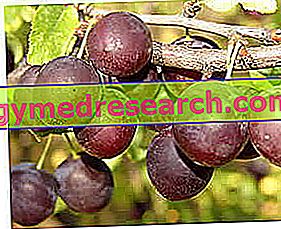
What is Refixia and what is it used for: Nonacog beta pegol?
Refixia is a medicine used to treat and prevent bleeding in patients with haemophilia B, a hereditary bleeding disorder caused by the lack of a coagulation protein called factor IX. It can be used in adults and children from 12 years of age.
Refixia contains the active ingredient nonacog beta pegol.
How is Refixia used - Nonacog beta pegol?
Refixia can only be obtained with a prescription and treatment should be performed under the supervision of a doctor experienced in treating haemophilia.
Refixia is available as a powder and liquid that are mixed together until a solution is injected into a vein. The dose and frequency of treatment depend on whether Refixia is used to treat bleeding or to prevent bleeding or to reduce bleeding during surgery, the extent and location of bleeding and the patient's body weight. For more information on the use of this medicine, see the summary of product characteristics (also part of the EPAR).
Patients or caregivers may be able to inject Refixia alone at home, as long as they are properly trained. For more details, see the package leaflet.
How does Refixia - Nonacog beta pegol work?
Patients with haemophilia B are deficient in factor IX, a protein necessary for normal blood coagulation and, therefore, are easily prone to bleeding. The active substance in Refixia, nonacog beta pegol, works in the body in the same way as the human factor IX. Replaces the missing factor IX, thus promoting blood coagulation and allowing temporary bleeding control.
What benefit has Refixia - Nonacog beta pegol shown during the studies?
Refixia has been shown to be effective both in treating bleeding episodes and in limiting the number of episodes.
In a study involving 74 adults and adolescents aged 13 or over, 29 patients who received Refixia as a weekly preventive treatment experienced approximately 1 hemorrhagic episode per year and 15 patients who received Refixia for treatment of "on-demand" bleeding manifested about 16 bleeding episodes per year. Furthermore, when bleeding occurred, Refixia was rated excellent or good in the treatment of approximately 92% of bleeding episodes. 87% of bleeding episodes were resolved with a single injection of Refixia.
In the second study of 25 children under the age of 13, all patients were given Refixia as a weekly preventive treatment. Patients experienced approximately 1 hemorrhagic episode per year and Refixia was rated excellent or good in the treatment of approximately 93% of bleeding episodes. About 86% of bleeding episodes were resolved with a single injection.
What are the risks associated with Refixia - Nonacog beta pegol?
(Allergic) hypersensitivity reactions are uncommon with Refixia (may affect up to 1 in 100 patients) and may include: swelling, burning and stinging at the site of injection, chills, redness, an itchy rash, headache, hives, low blood pressure, lethargy, nausea and vomiting, restlessness, tachycardia, chest tightness and wheezing. In some cases these reactions can become severe.
Some patients taking factor IX medicines may develop inhibitors (antibodies) against factor IX, causing the medicine to become ineffective resulting in loss of bleeding control. Factor IX medicines could also cause problems due to the formation of blood clots in the blood vessels.
Refixia should not be used in patients allergic to hamster proteins. For the full list of side effects and limitations, see the package leaflet.
Why has Refixia - Nonacog beta pegol been approved?
The Agency's Committee for Medicinal Products for Human Use (CHMP) decided that Refixia's benefits are greater than its risks and recommended that it be approved for use in the EU.
Studies show that Refixia is effective in the prevention and treatment of bleeding episodes in patients with haemophilia B and that its safety is comparable to that of other factor IX products. However, following long-term treatment, part of the active ingredient of Refixia (called PEG) can accumulate in the body, including in a structure in the brain called the choroid plexus. As this could potentially cause problems especially in children under the age of 12, the use of Refixia is only approved for adults and children from 12 years of age.
What measures are being taken to ensure the safe and effective use of Refixia - Nonacog beta pegol?
The company that markets Refixia will conduct a study to examine the potential effects of PEG accumulation in the cerebral choroid plexus and other organs.
Recommendations and precautions to be followed by healthcare professionals and patients for the safe and effective use of Refixia have been included in the summary of product characteristics and the package leaflet.
More information on Refixia - Nonacog beta pegol
For the full EPAR and the summary of the Refixia risk management plan, refer to the Agency's website: ema.europa.eu/Find medicine / Human medicines / European public assessment reports. For more information about treatment with Refixia, read the package leaflet (also part of the EPAR) or contact your doctor or pharmacist.



